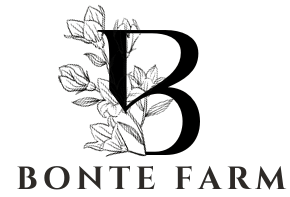Bonte Farm
California Peppercorn Tree: A Drought-Tolerant Shade Provider
California Peppercorn Tree: A Drought-Tolerant Shade Provider
Couldn't load pickup availability
California Peppercorn Tree: Effortless Beauty
The California Peppercorn Tree ( Schinus molle) is a beautiful and versatile evergreen tree native to the Peruvian Andes and other parts of South America. It's widely naturalized in California and other warm regions, prized for its graceful, weeping form, fragrant foliage, and drought tolerance. This tree offers a unique blend of ornamental appeal and practical benefits, making it a valuable addition to many landscapes.
A Cascade of Green:
- Elegant Form: The California Pepper Tree is characterized by its spreading canopy of delicate, pinnate leaves, which create a lacy, weeping silhouette. This graceful form provides dappled shade and adds a touch of Mediterranean charm to the landscape.
- Aromatic Foliage: The leaves emit a peppery scent when crushed, adding another layer of sensory interest to the garden.
- Colorful Berries: Female trees produce clusters of small, pink or reddish berries in the fall and winter, adding a splash of color and attracting wildlife.
Botanical Characteristics:
- Scientific Name: Schinus molle
- Common Names: California Pepper Tree, Peruvian Pepper Tree, Pepper Tree
- Growth Habit: Evergreen tree with a spreading, weeping canopy.
- Foliage: Pinnate, lance-shaped leaflets, typically 1-2 inches long, with a characteristic peppery aroma.
- Mature Size: Typically reaches 25-40 feet (7.5-12 meters) in height with a similar or wider spread. Canopy spread can be significantly wider than the tree's height.
- USDA Hardiness Zones: 8-11. Tolerant of a wide range of warm climates.
Cultivation and Care:
- Sunlight: Prefers full sun for optimal growth and canopy development.
- Soil: Tolerates a variety of soil types, including sandy, loamy, and clay soils, as long as they are well-drained. Extremely drought-tolerant once established.
- Water: Water regularly during the first year to establish a strong root system. Once established, California Pepper Trees are remarkably drought-tolerant and require minimal supplemental watering, even in dry climates. Overwatering can lead to root rot.
- Fertilizer: Generally, fertilization is not necessary for established trees. A balanced fertilizer can be applied in spring if growth appears slow.
- Temperature: Thrives in warm climates. Tolerates heat and drought. Some frost damage may occur in borderline hardiness zones.
- Pruning: Minimal pruning is required. Pruning can be done to shape the tree, remove dead or crossing branches, and manage canopy size.
Landscape Use:
- Shade Tree: The spreading canopy provides welcome shade, making it ideal for patios, decks, and near walkways.
- Specimen Tree: The graceful form and aromatic foliage make it an attractive specimen tree in lawns or open spaces.
- Street Tree: Commonly used as a street tree in warm climates due to its drought tolerance and adaptability.
- Windbreak: The dense canopy can provide some wind protection.
- Erosion Control: The extensive root system helps stabilize soil and prevent erosion.
Wildlife Attraction:
- Birds: The berries are a food source for various bird species.
- Insects: Flowers attract pollinators, and the tree provides habitat for some insects.
Pest and Disease Resistance:
- Generally resistant to most common pests and diseases.
- Can be susceptible to root rot in poorly drained soils.
- Some insects may feed on the leaves or berries.
Propagation:
- Typically propagated from seed. Seed germination rates can be variable.
Incorporating a California Pepper Tree into Your Landscape:
- Planting Location: Choose a sunny location with well-drained soil and ample space for the mature canopy spread.
- Companion Plants: Plant with other drought-tolerant species that thrive in similar conditions. Consider plants that appreciate some shade, as the pepper tree will create dappled shade beneath its canopy.
- Considerations: Be aware of the potential for falling berries, which can create a slight mess beneath the tree.
Relevant Plants: California Pepper Tree, Schinus molle, Peruvian Pepper Tree, Pepper Tree, drought-tolerant tree, shade tree, evergreen tree, aromatic foliage, ornamental tree, wildlife tree, bird-attracting tree, USDA zone 8, USDA zone 9, USDA zone 10, USDA zone 11, landscape tree, specimen tree, street tree, windbreak tree, erosion control.
Share






